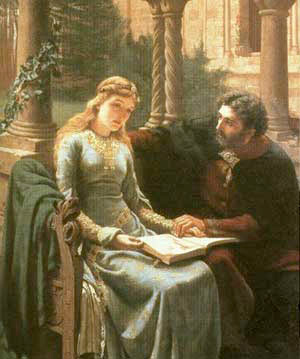
1853 - 1922

Edmund Blair Leighton was a painter of historical genre pictures, mainly of medieval times, but also regency. Rather like Waterhouse, and Herbert Draper, Leighton the man has virtually disappeared. The reasons for the continuing popularity of the artist's work are not difficult to understand, as they are similar to those in his lifetime, namely nostalgia for an elegant chivalrous past. Leighton was also a fastidious craftsman producing highly- finished beautifully painted decorative pictures. It would appear that he left no diaries, and I have been unable to locate any mention of him in biographies, and though he exhibited at the Royal Academy for over forty years, he was never an Academician or an Associate. I set out below such information as I have been able to accumulate on the elusive Leighton.
Edmund Blair Leighton was born on the 21st September 1853, the son of the artist Charles Blair Leighton. He was educated at University College School, before becoming a student at the Royal Academy Schools. Leighton married Katherine Nash in 1885; they had a son and daughter. He exhibited annually at the RA from 1878 to 1920. Leighton was, as might be expected from his historic genre paintings a collector of old musical instruments, art, and furniture. He lived at 14 Priory Road, Bedford Park, London, and died on the 1st September 1922.
I set out below a short obituary of Leighton, taken from a magazine published early in 1923.
Obituary - The late Edmund Blair Leighton 1853-1922 The death of Mr. Edward Blair Leighton, on September 1st, removed from our midst a painter who, though he did not attain to the higher flights of art, yet played a distinguished part in aiding the public mind to an appreciation of the romance attaching to antiquity, and to a realization of the fellowship of mankind throughout the ages.
Mr. Blair Leighton was born in London, on September 1st 1853, his father being that Charles Blair Leighton, portrait and subject painter, whose exhibits at the Royal Academy and other London galleries covered the period between 1843 and 1855. The son was educated at University College School, before taking a position in an office in the city, but entered the Royal Academy Schools after a course of evening study at South Kensington and Heatherley's.
He commenced exhibiting in 1874, and succeeded, four years later, in securing the verdict of the Hanging Committee of the Royal Academy in favor of two works, entitled respectively 'Witness My Act and Seal,' and 'A Flaw in the Title.' Since then his highly wrought style was regularly represented at Burlington House until two years prior to his decease. Among the better known of his pictures, many of which were published, may be named 'The Dying Copernicus (1880), To Arms (1888), Lay thy sweet hand in mine and trust in me ( 1891), Lady Godiva (1892), Two Strings (1893), Launched in Life (1894), The Accolade (1901), Tristram and Isolde (1907), The Dedication (1908), The Shadow (1909), 'To the Unknown Land (1911),' and 'The Boyhood of Alfred The Great,' 1913. For the past dozen years or so, Mr. E Blair Leighton had been a member of the Royal Institute of Oil Painters. He had married in 1885, Miss Katherine Nash, by whom he had, with a daughter, one son, Mr. E J Blair Leighton, who has also adopted painting as a profession.
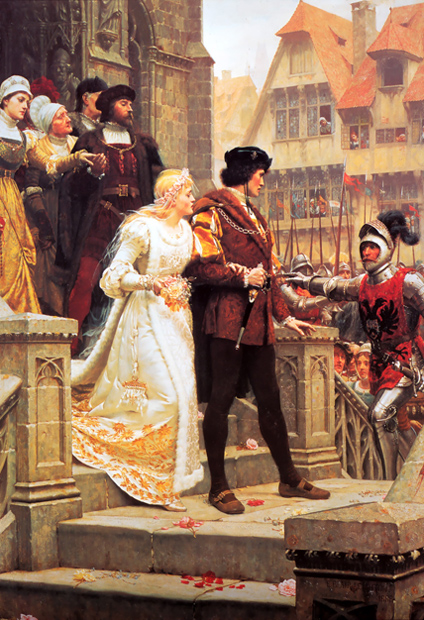
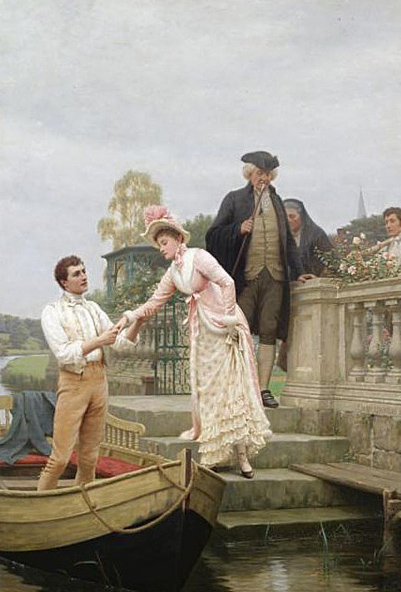

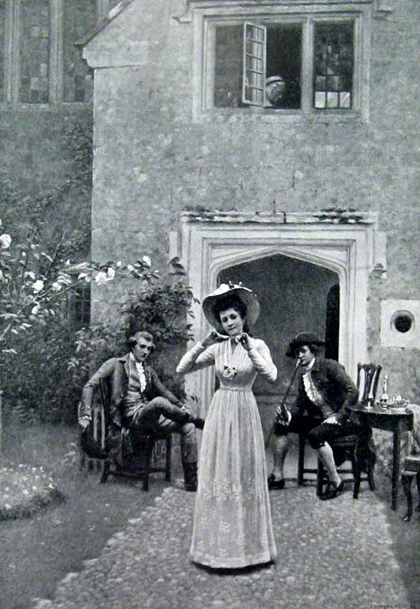
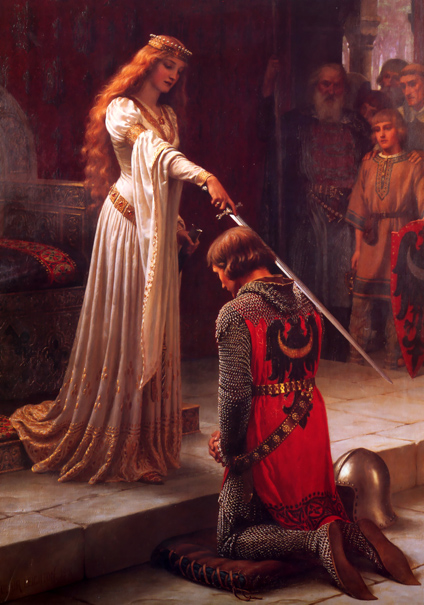
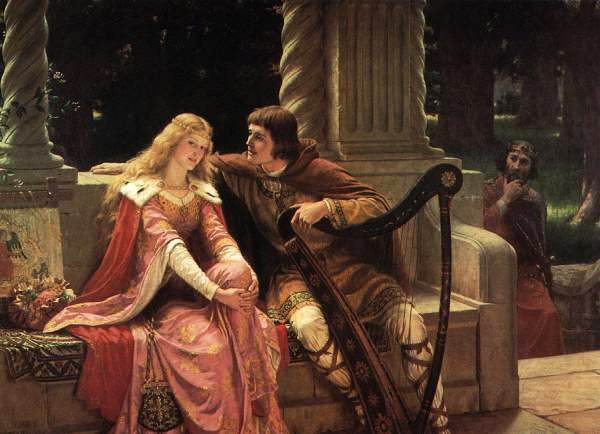
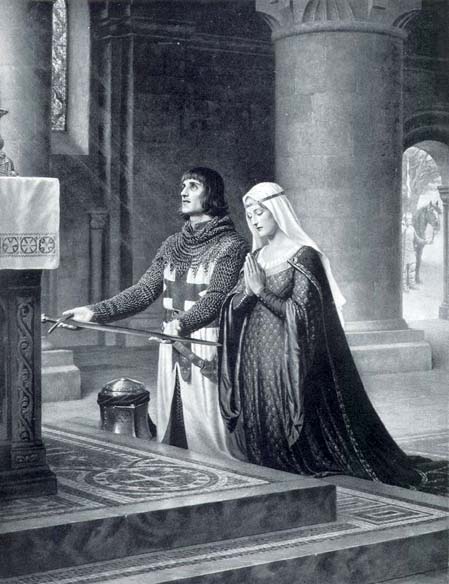
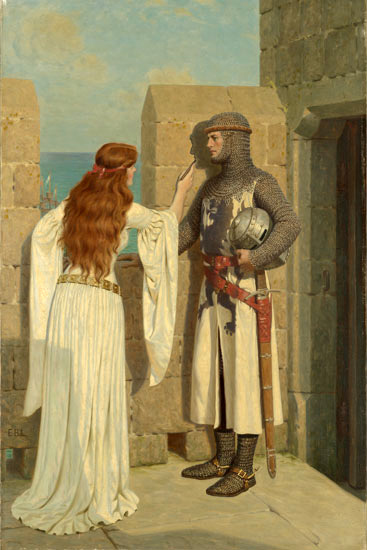

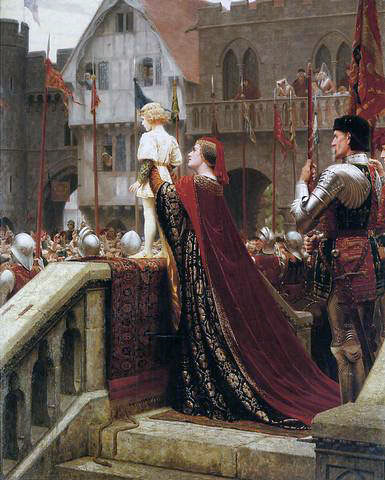
Appeal of The Work of Edmund Blair Leighton
This short comment regarding the work of Leighton was written in 1897, by Gleeson White, a writer and journalist on art. "The artist selects as a rule themes which offer an excuse for old-world costume, and an easily read anecdote. To place Mr. E Blair Leighton's work in a class to which it makes no pretence to belong, or to contrast it with the masterpieces of the past, or even of the present, would be to do it an injustice. It is the pictorial equivalent of light literature, of belles letters, of graceful novels and vers de societe, of much that is charming of its kind, if by its very nature ephemeral."
This is a very perceptive comment about the work of Edmund Blair Leighton, which has always struck me as being like elegantly crafted light music. I think that the writer, who called Leighton's work ephemeral, would be rather surprised by its enduring appeal.
Source: Victorian Art in Brittan



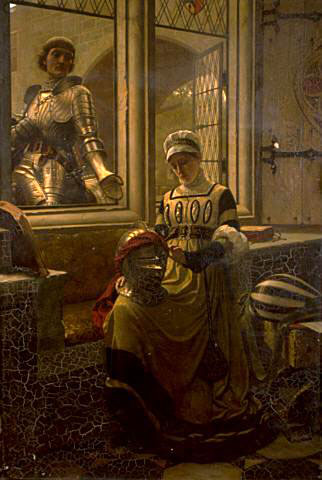
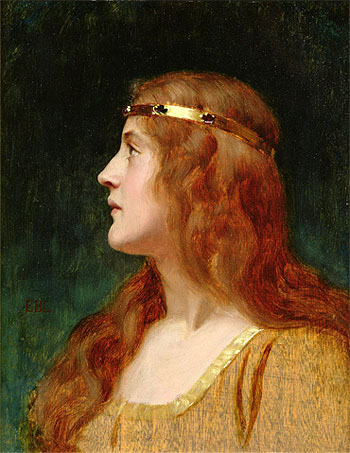
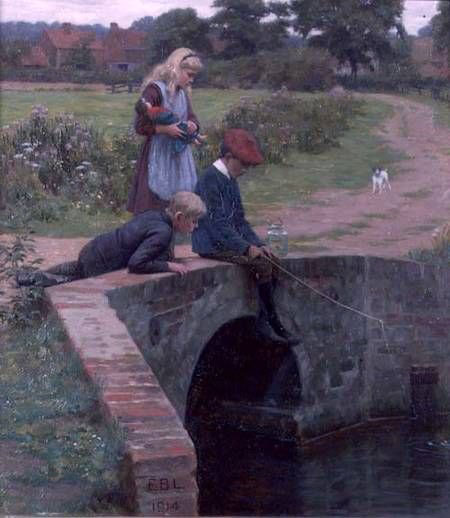
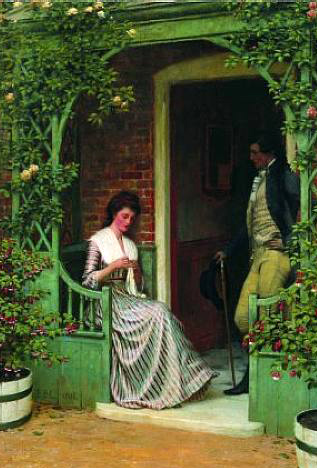
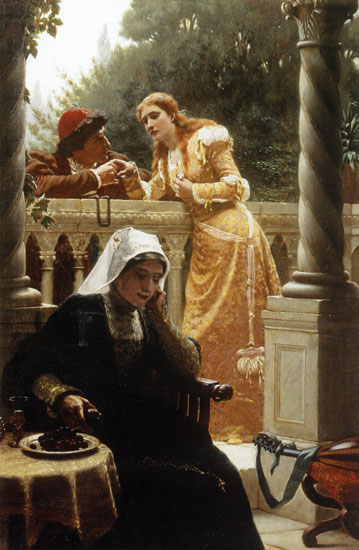
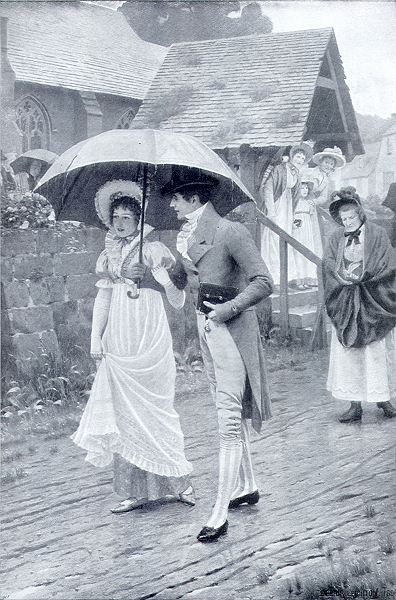
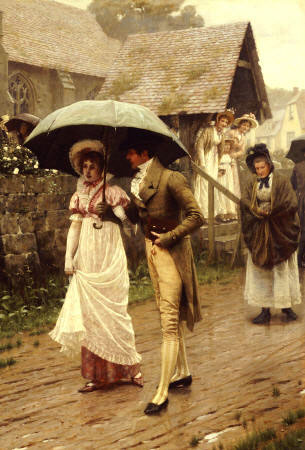


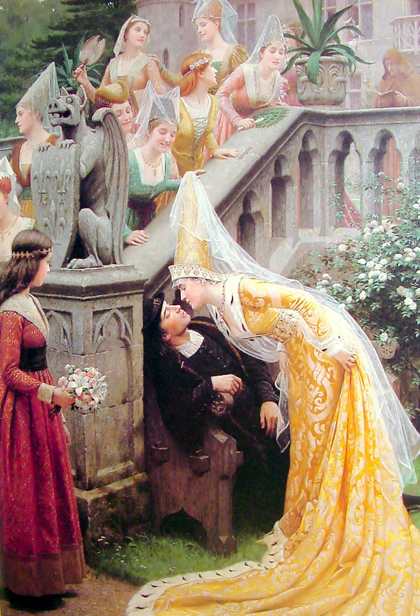
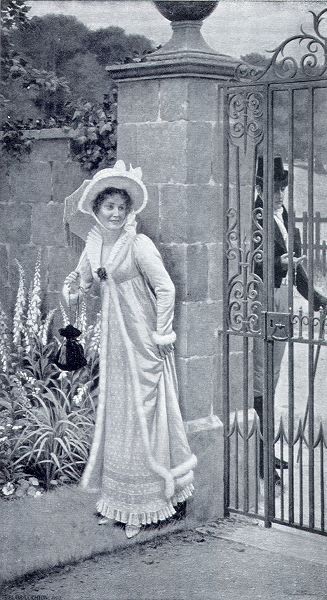
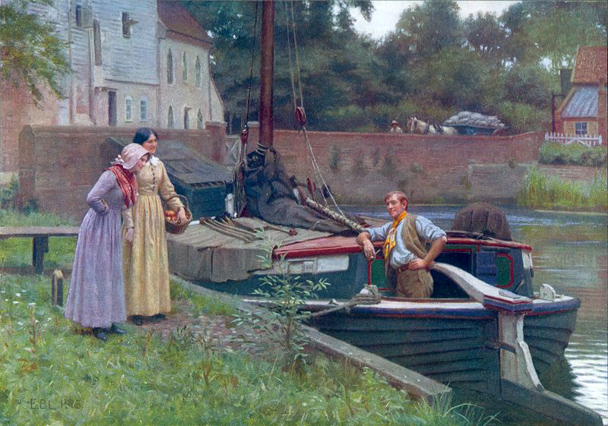
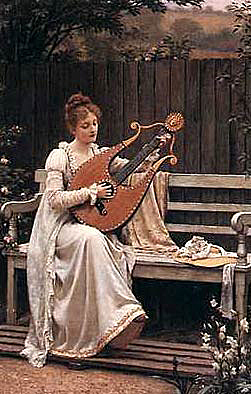
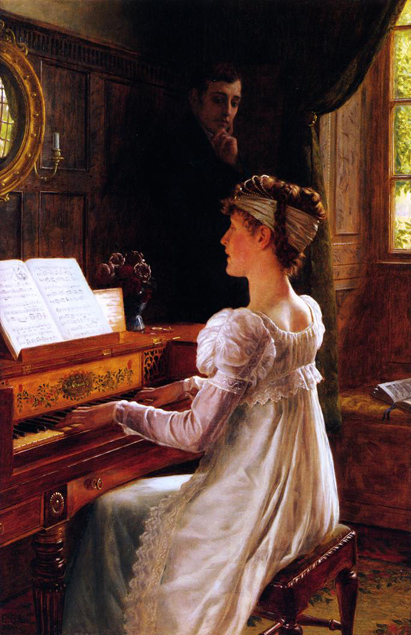
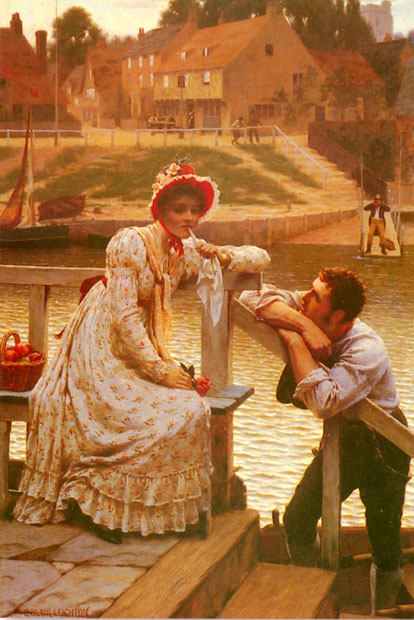
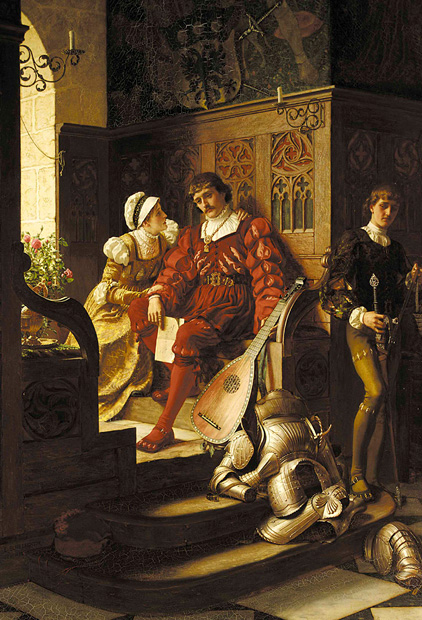


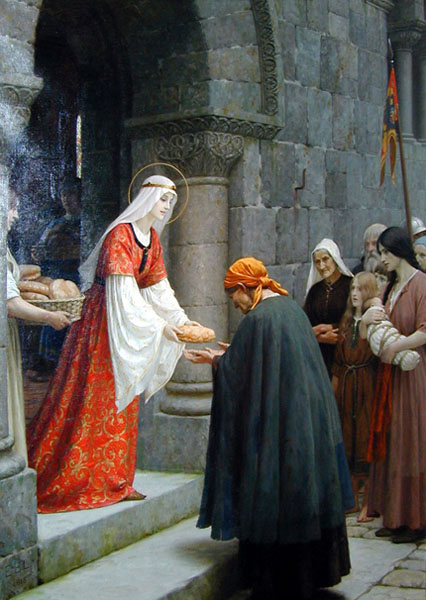
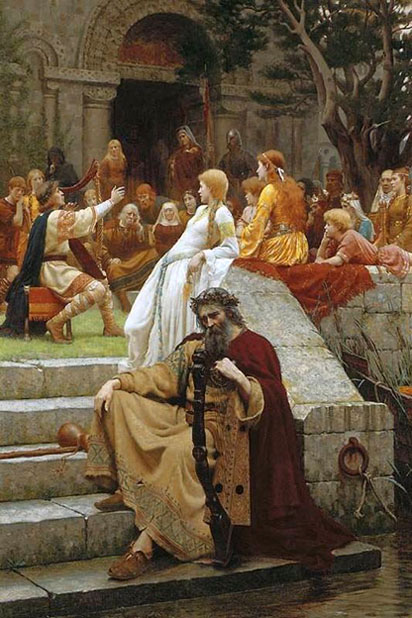
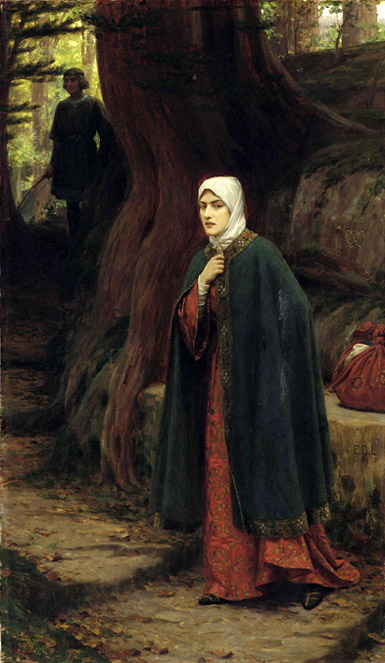
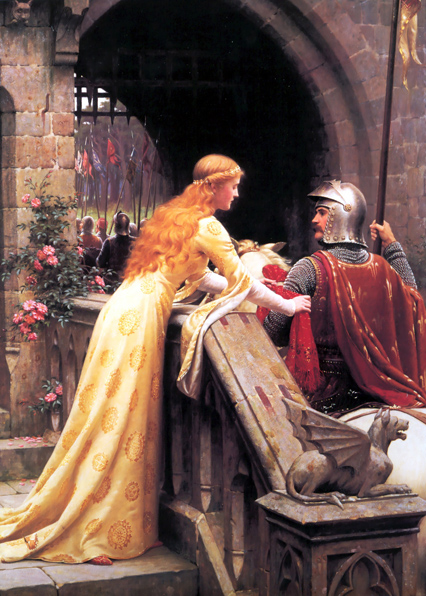
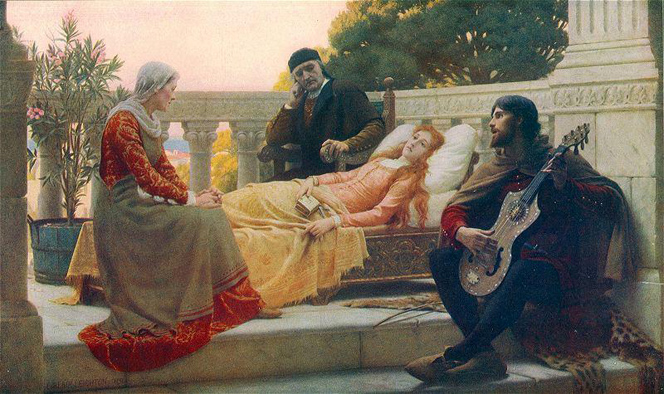
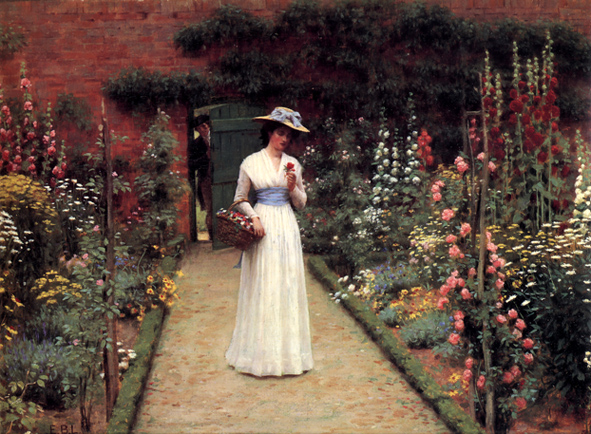
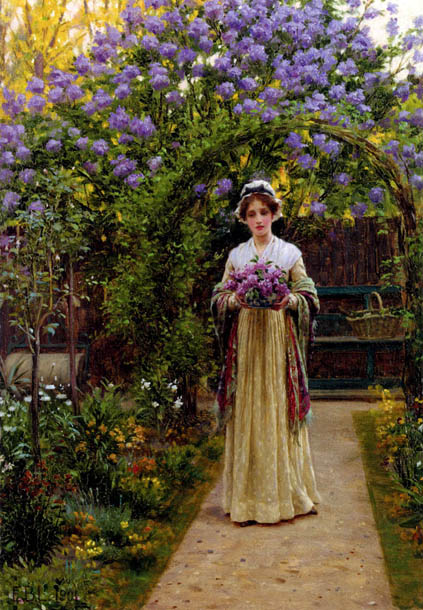
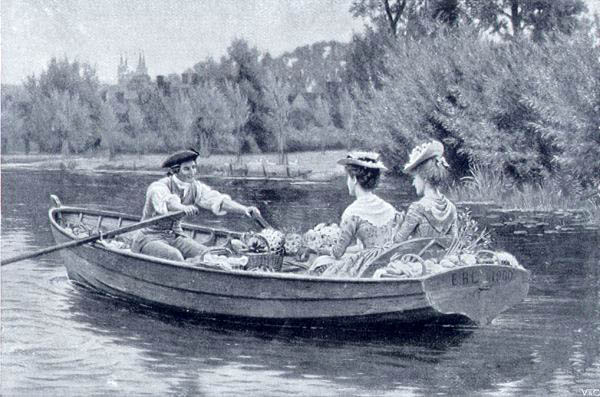
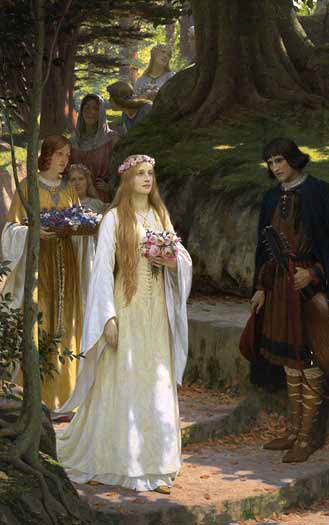
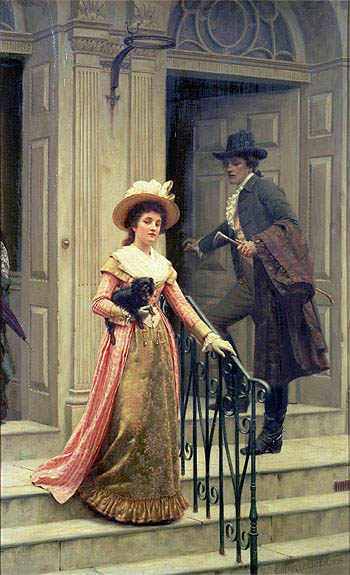
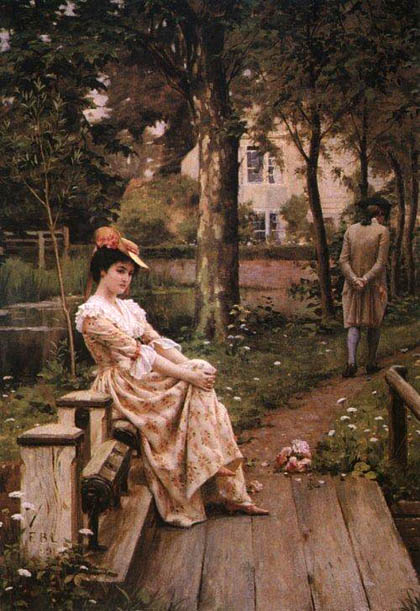
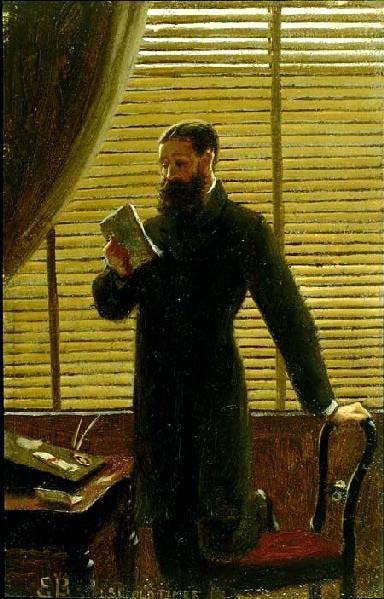
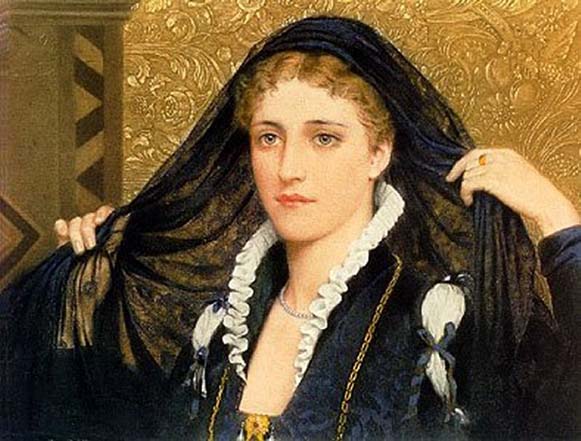
"Have you any commission from your lord to negotiate with my face? You are now out of your text: but we will draw the curtain and show you the picture" (Twelfth Night, Act I, Scene v). Leighton's Olivia was shown in 1888 in an exhibition of twenty-one paintings sponsored by the newspaper Graphic. The series of pictures was entitled Shakespeare's Heroines.
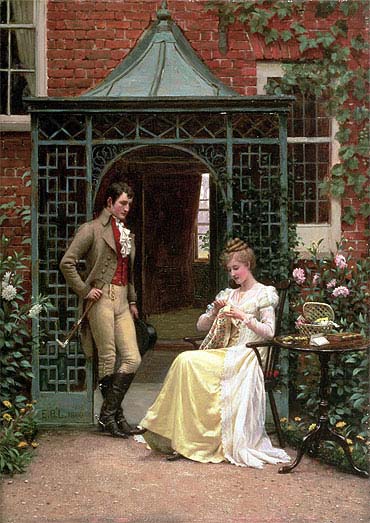
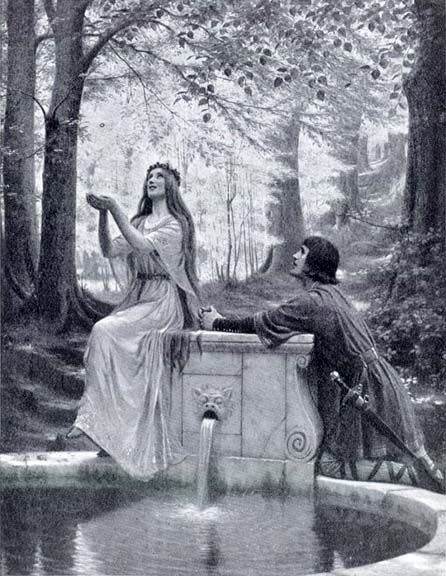
Golaud discovers Mélisande by a stream in the woods. She has lost her crown in the water, but does not wish to retrieve it. They marry and she instantly wins the favor of Arkël, who is ill. She falls in love with Pelléas. They meet by the fountain, where Mélisande loses her wedding ring. Golaud grows suspicious of the lovers, has Yniold spy on them, and discovers them caressing, whereupon he kills Pelléas and wounds Mélisande. She later dies after giving birth to an abnormally small girl.
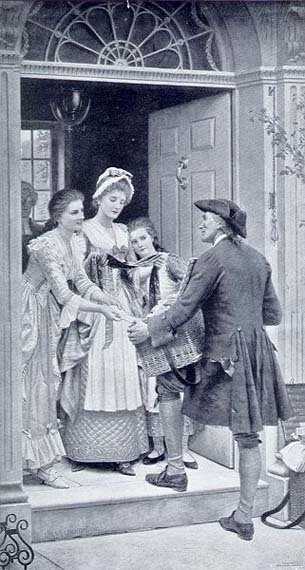
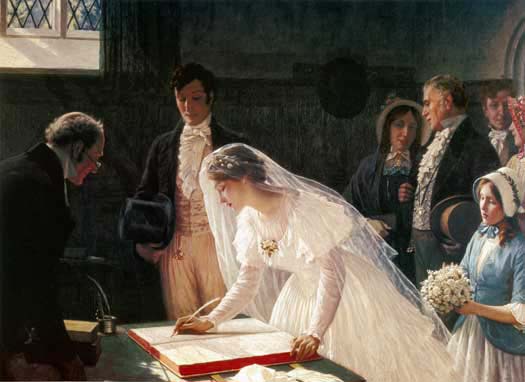

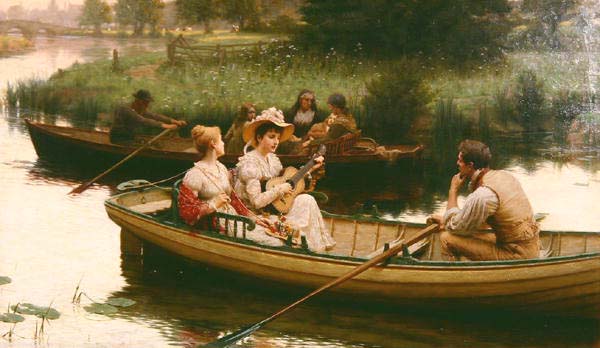
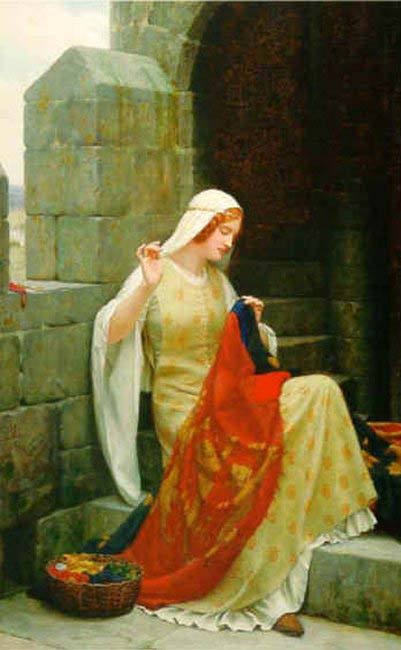

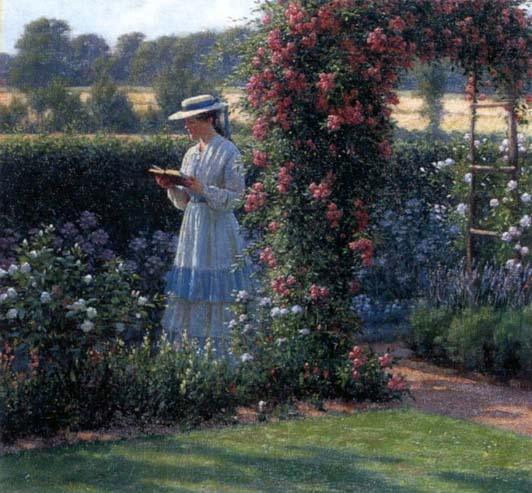
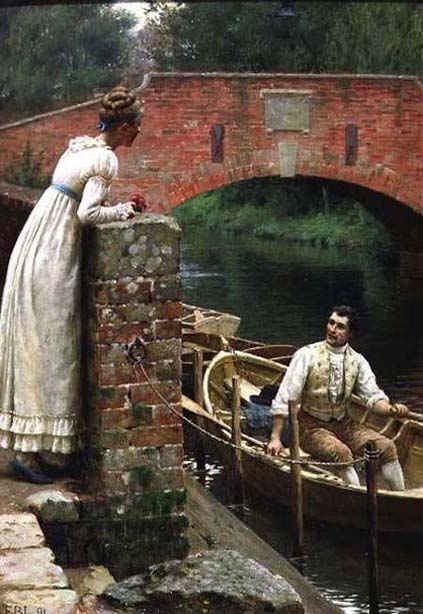
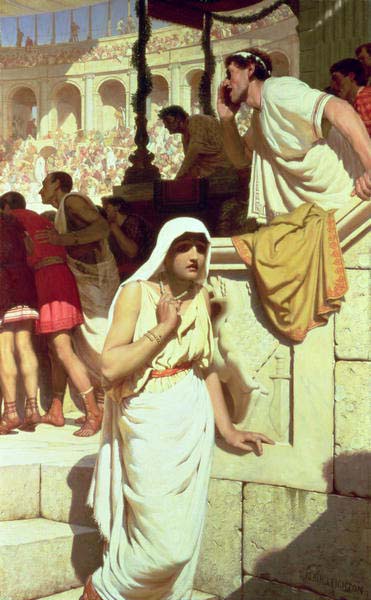
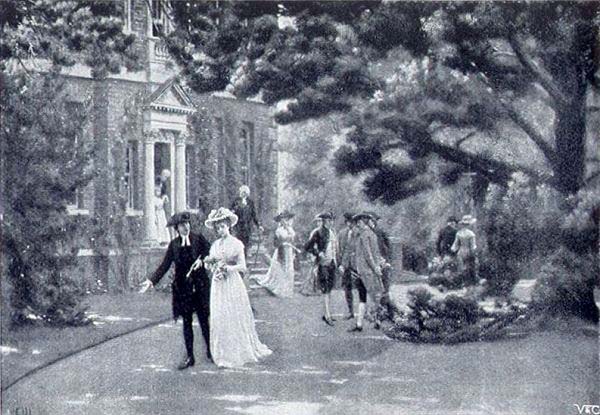

An oil sketch for The Hostage was sold at Sotheby's in 1995. It differs in minor details - for example, the girl in the sketch is holding a book in her left hand and the coastline in the background appears closer to the castle.
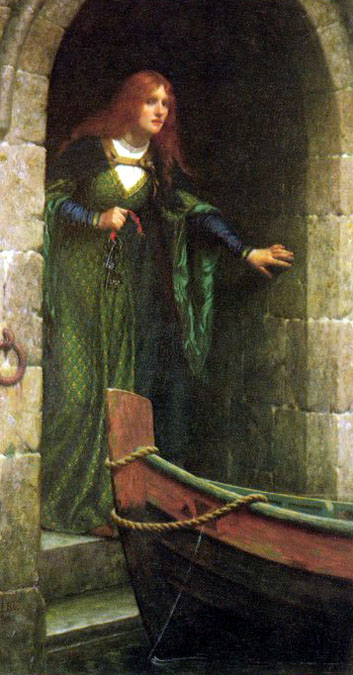
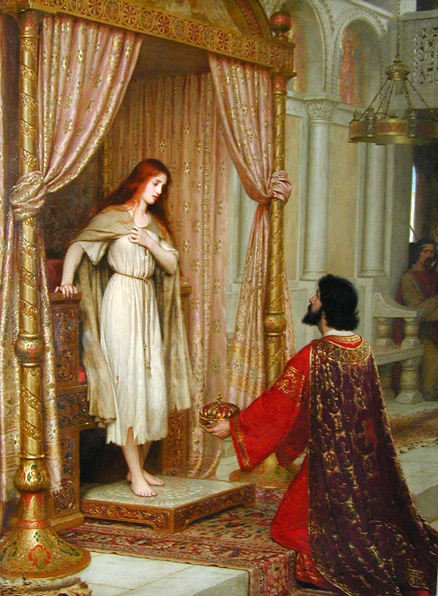
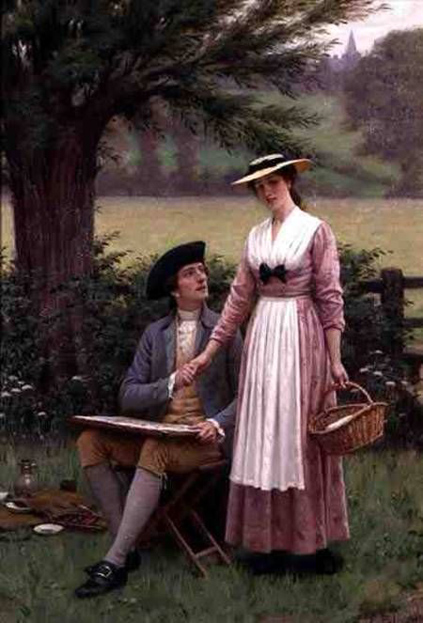
She died, on the 18th January 1797, Sarah Countess of Exeter, the heroine of a singular M'esalliance. The story has been several times handled in both prose and verse. Tennyson tells it under the title of 'The Lord of Burleigh', relating how, under the guise of a poor landscape painter, Henry Cecil wooed a village maiden, and gained her hand; how he conducted her on a tour, seeing:
Until they came to a majestic mansion, where the domestics bowed before the young lover, whose wife then, for the first time, discovered his rank.
The real details of this romantic story are not quite so poetical as Mr. Tennyson represents, but yet form a curious anecdote of aristocratic eccentricity. It appears that Mr. Henry Cecil, while his uncle held the family titles, married a lady of respectable birth, from whom, after fifteen years of wedded life, he procured a divorce. Before that event, being troubled with heavy debts, he put on a disguise, and came to live as a poor and humble man, at Bolas Common, near Hodnet, an obscure village in Shropshire. No one came to inquire after him; he had vanished from the gaze and the knowledge of all his relatives.
He was known to none, and having no ostensible means of living, there were many surmises as to who and what he was. The general belief at one moment was that he gained his bread as a highwayman. In anticipation of the divorce he paid addresses to a young lady of considerable attractions, named Taylor, who, however, being engaged, declined his hand. He lodged with a cottage laborer named Hoggins, whose daughter Sarah, a plain but honest girl, next drew the attention of the noble refugee. He succeeded, notwithstanding the equivocal nature of his circumstances, in gaining her heart and hand. It has been set forth that Mr. Cecil, disgusted with the character of his fashionable wife, resolved to seek some peasant mistress who should love him for his own sake alone; but the probability is that the young noble was simply eccentric, or that a craving for sympathy in his solitary life had disposed him to take up with the first respect-able woman who should come in his way. Under the name of Mr. John Jones, he purchased a piece of land near Hodnet, and built a house upon it, in which he lived for some years with his peasant bride, who never all that time knew who he really was. It has been stated that he did not appear fastidious about what he did. He on one occasion gratified his father-in-law by carrying a large pig to be given as a present to a neighboring squire. He took his turn of service in the vestry, in which duty, having occasion to attend the Shrewsbury sessions, he was noticed by a brother magistrate, who had been his school-fellow; but it did not lead to detection. He disappeared for a short time occasionally, in order, as is supposed, to obtain supplies of money. The marriage took place on the 3rd of October 1791, not long after the divorce of the first Mrs. Henry Cecil was accomplished.
Two years after the marriage (December 27th, 1793), Mr. Cecil succeeded to the peerage and estates in consequence of the death of his uncle; and it became necessary that he should quit his obscurity at Hodnet. Probably the removal of the pair to Burleigh House, near Stamford, was effected under the circumstances described by the Laureate. It is also true that the peasant countess did not prove quite up to the part she had been unwittingly drawn into. Being, as it chanced, a ruddy-faced and rather robust woman, she did not pine away in the manner described by Mr. Tennyson; but after having borne her husband three children (amongst whom was the peer who succeeded), she sickened and died, January 18, 1797. The earl was afterwards created a marquis, married a third wife, the Dowager Duchess of Hamilton, and died in 1804.

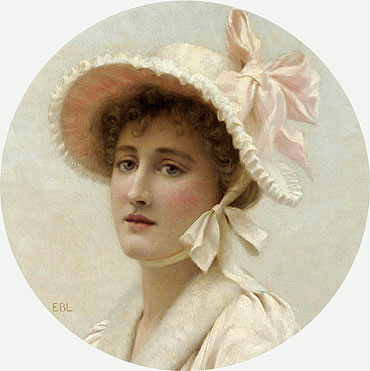
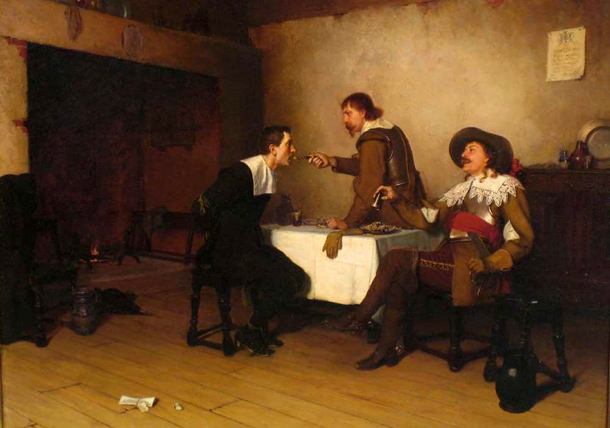
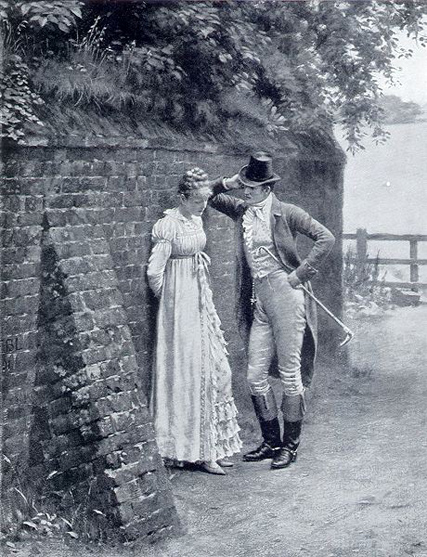
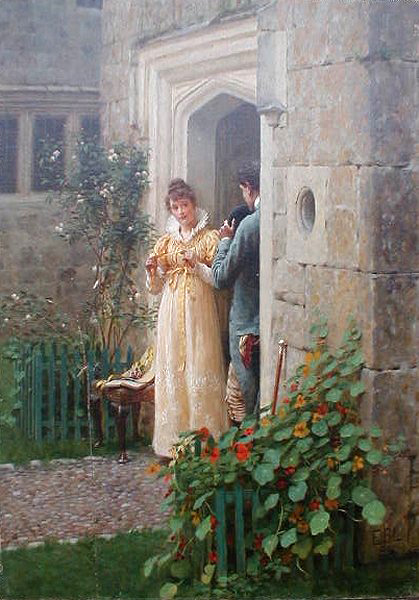

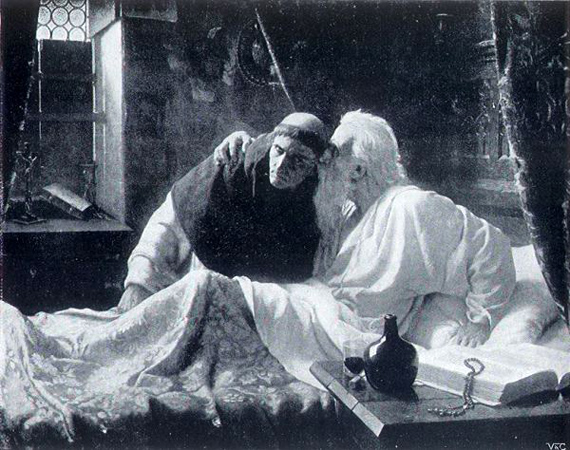
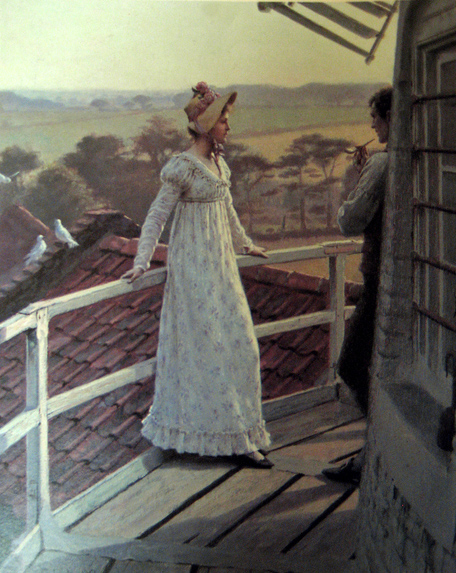
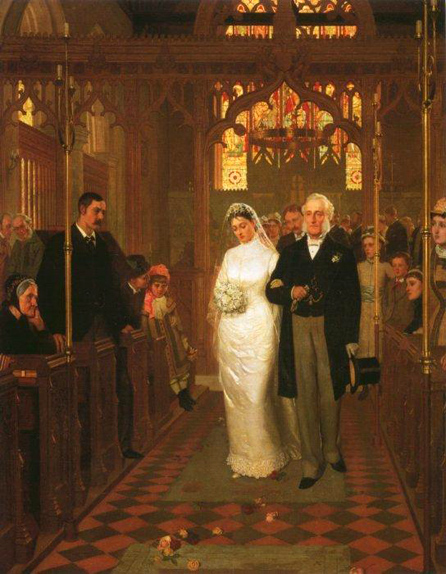


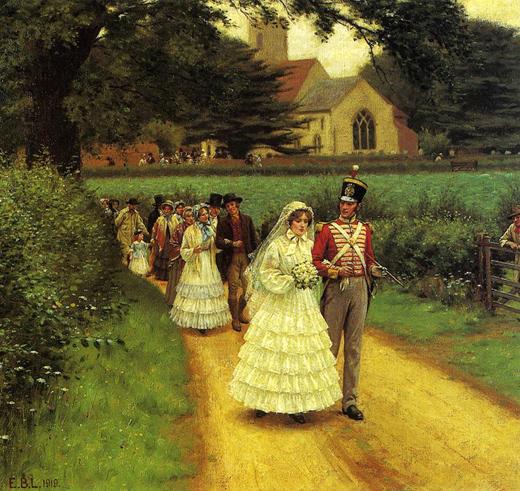
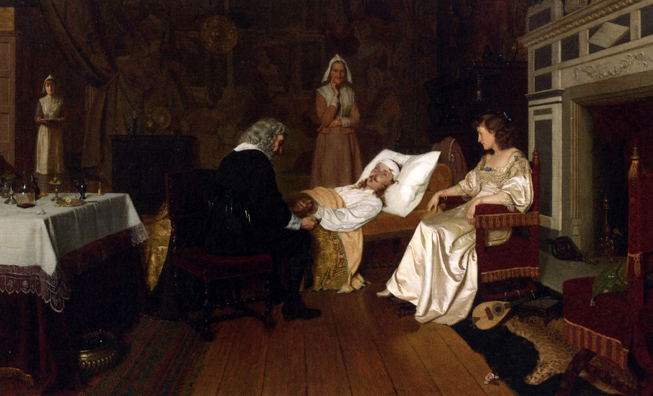
Source: Art Renewal Center
Source: Edmund Blair-Leighton Online
Return to Pagina Artis
Return to Bruce and Bobbie's Main Page.